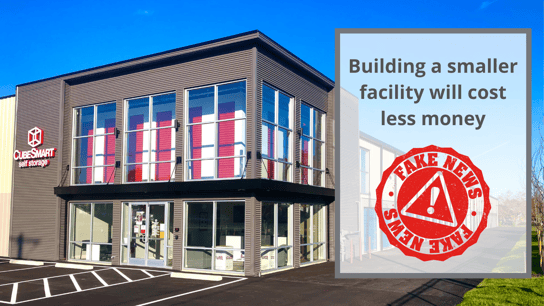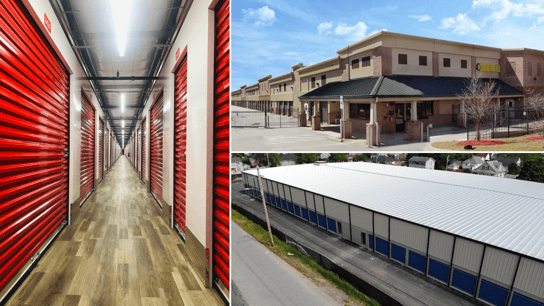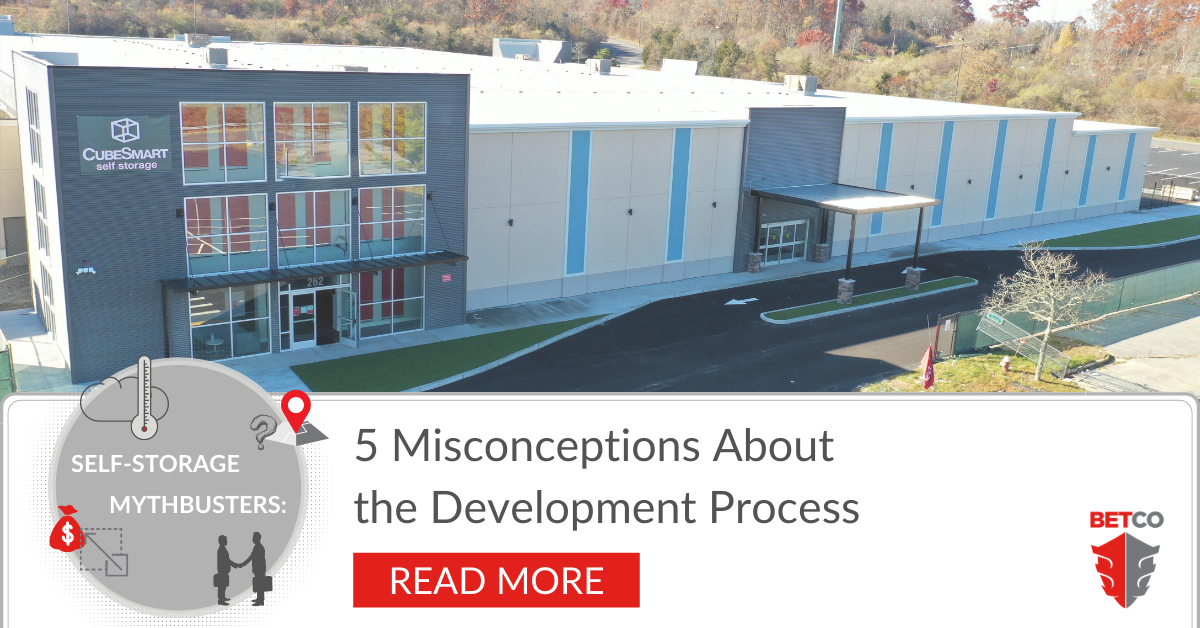Self-storage has proven time and time again to be a lucrative and successful business, but it’s important to note that not everything is as easy as it seems. There are several ‘ins and outs’ in the development process that new owners don’t consider, as well as many misconceptions that can lead them astray. In this blog, we’ll cover 5 common misconceptions that self-storage owners face when starting a new project, and how to avoid the complications that often arise because of them.
MYTH #1: Choosing developmental partners for your self-storage project will be easy.
While there are a sea of developers, architects and builders to choose from when it comes to gather a team for your new project, choosing developmental partners is no easy task. Each one claims to be the best and does a great job at talking the talk, but it's your job to make sure they can walk the walk. Choosing partners based solely on recommendation is not a great choice. If they’re more inexperienced than you’re aware of, it can cause delays and complications in the development of your project down the road.
If you want to start your self-storage project off on the right foot, your highest priority should be choosing your developmental team. As an owner, you’ll need to put in the time and effort it takes to research your potential partners in order to ensure that your facility is built correctly, within your timeframe, and with little to no delays. This includes conducting extensive interviews, scrutinizing portfolios, and visiting facilities that they’ve previously worked on to physically see their work for yourself. Building a strong team is the first step to building a strong self-storage facility.

MYTH #2: Idle land should always be used for self-storage.
The reason that this is, in fact, a myth is because there isn’t a demand for self-storage in every location. While you may own a piece of idle land, if there isn't a high demand for storage in that area, building a storage facility will not be profitable. To be frank, you can end up wasting a lot of time and money. New owners need to keep in mind that it could take longer than expected to accumulate tenants, especially if there is low demand for self-storage, and you could end up spending more in operational costs than you’re bringing in through rentals.
It’s important to make wise choices regarding idle land. If there is no demand for storage in your area, consider utilizing it for another business opportunity that would be more profitable. Do some research to see what works and what doesn’t. On the off chance that there is no profitable opportunity, think about selling the land and finding another location to build a self-storage facility. You want to build in a high traffic area, and in areas where your facility will meet the needs of the surrounding community.
MYTH #3: Building a smaller self-storage facility will cost less.
Unless you’re building a facility in phases, or you’re buying an existing building at a decent price and converting it into storage space, building a smaller facility will not cost less, especially in the long run. Most experts will agree that it is not cost effective to build a facility under 40,000 square feet. If you have a smaller facility, you may not even be able to deliver acceptable returns in order to cover your operating costs, which will negatively impact your business.
40,000 square feet of storage generally requires 2 – 3 acres of land, with the exception of multistory facilities, which can garner more square footage by building vertically. Larger facilities can generate more revenue by offering not only more units, but a wider variety of units. You can offer a multitude of unit sizes, and in some instances, you can mix traditional units and drive-up units to more effectively meet the demand of your customers.

MYTH #4: A self-storage facility will flourish in any location.
If you plant a flower in the shade where it receives no sunlight, it won’t grow. The same concept can be applied to where you build your self-storage facility; if you build in locations where customers can’t see you, your business will not flourish. Obviously, good marketing strategies can definitely impact the success of your business, but it can only take you so far. If you’re not careful and steadily building your business, marketing efforts can become wasteful. Clear visibility is the best strategy to draw in new tenants.
The best way to be visible to the public is by building in high traffic areas. Building close to highways, in dense urban areas, or in commercial locations has proven to be strategic and helpful at bringing in business. A smart tactic is to build as close to the road as possible, with blatant signage and visible doors so that people driving by can obtain a quick, solid visual of what your business offers. A facility that is built away from the road will have a harder time gaining impact, simply because people can’t see what’s there.
MYTH #5: Majority of your self-storage units should be climate-controlled.
Don’t get me wrong, climate-controlled units are a huge benefit to many tenants, and a great opportunity for you to increase revenue by charging higher rental rates. It’s a particularly great concept to implement in multistory facilities, since all of the units are indoors; however, too many climate-controlled storage units in one facility can cause some problems.

You need to consider the needs of ALL tenants. Some may require large, drive-up units to accommodate their belongings, while others may not want to pay the premium rental rate. If you don’t have a variety of unit options, you could potentially drive away customers. An issue also arises if you are unable to achieve a high enough occupancy rate. If you’re not filling the climate-controlled units, you’re not charging a premium rental rate, and your HVAC costs will end up costing more than you’re making. It’s an important step in the developmental process to determine the right amount of climate-controlled storage units to include at your facility.
There are a lot of considerations when starting a self-storage project, and it’s beneficial to get all of the misconceptions out of the way so that you’re better prepared to make the right decisions to ensure success at your facility. Self-storage is a great industry to get into and has one of the highest success rates to date. Once you understand the 'ins and outs' of the development process, you’ll be on the right track to building a successful self-storage facility.
Do you want to learn more about the development process?
Click here or the image below to download your FREE infographic to learn the 8 Steps to Self-Storage Development!



